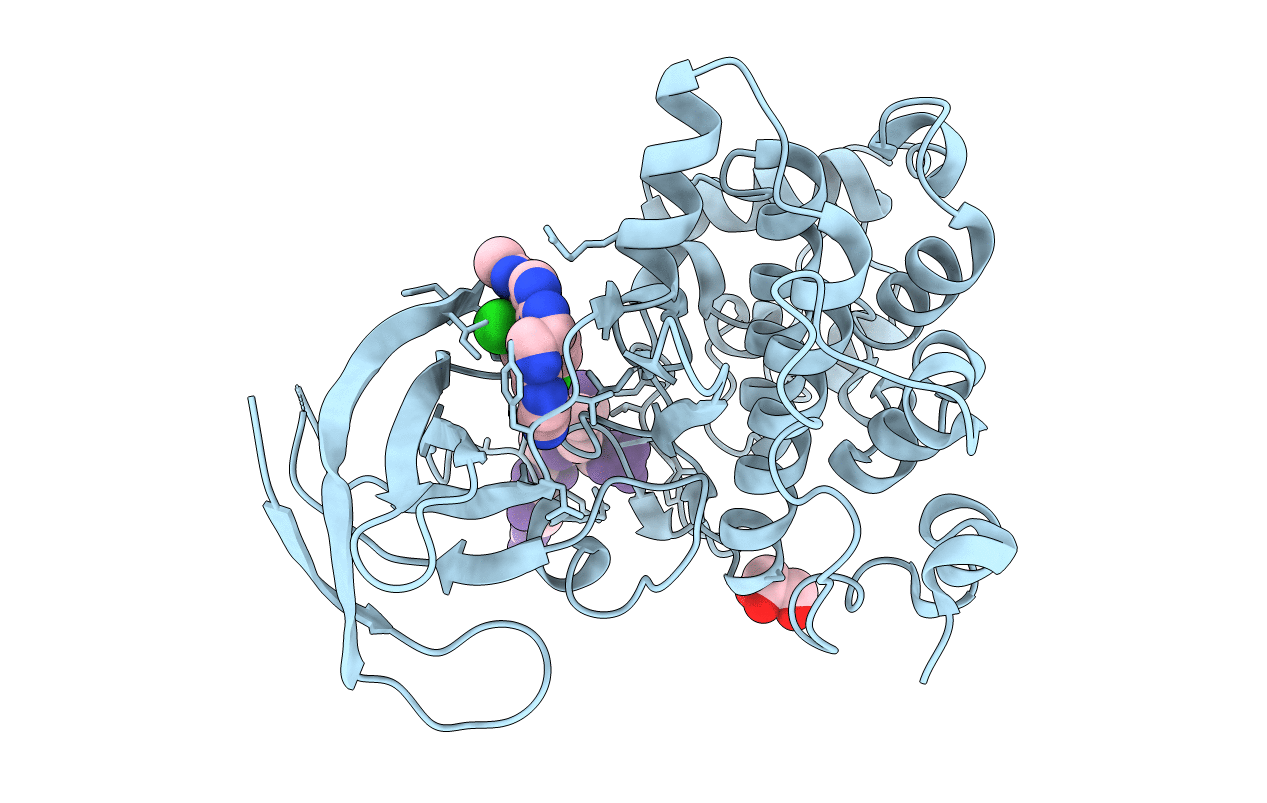
Deposition Date
2017-10-08
Release Date
2017-11-08
Last Version Date
2024-11-20
Entry Detail
PDB ID:
6B8J
Keywords:
Title:
Co-structure of human glycogen synthase kinase beta with a selective (5-imidazol-2-yl-4-phenylpyrimidin-2-yl)[2-(2-pyridylamino)ethyl]amine inhibitor
Biological Source:
Source Organism:
Homo sapiens (Taxon ID: 9606)
Host Organism:
Method Details:
Experimental Method:
Resolution:
2.60 Å
R-Value Free:
0.24
R-Value Work:
0.21
R-Value Observed:
0.21
Space Group:
P 1 21 1


